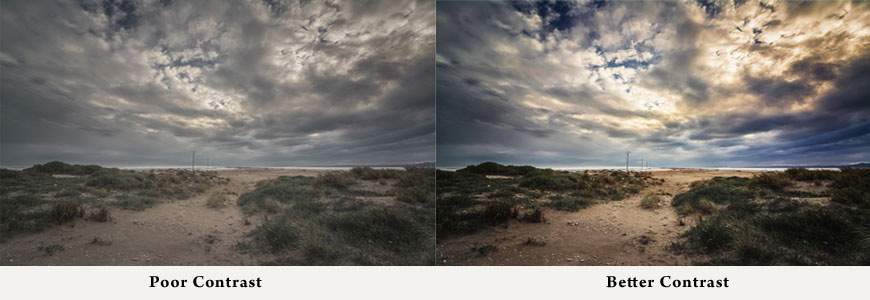Low Vision Centre
Vision Enhancement and Low Vision Centre
The Clinic aims to provide the best possible management for persons with low vision.
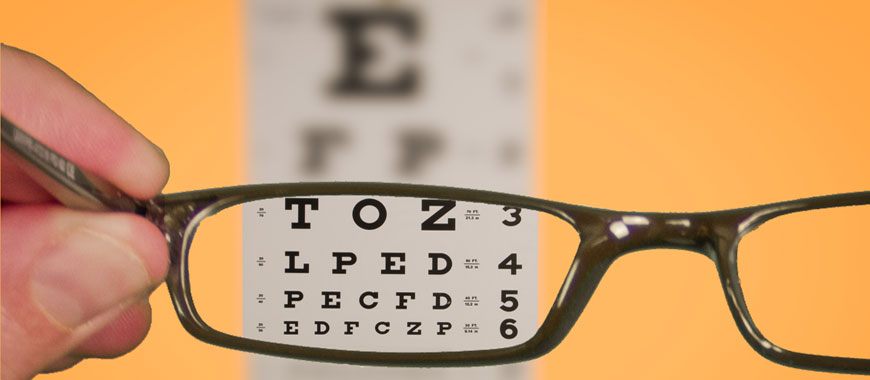
What is low vision ?
Basically,"Low Vision" describes significant visual impairment that can't be corrected fully with Glasses, Contact Lenses, Medication or Eye Surgery.
Loss of best - corrected visual acuity ( BVCA ) to worse than 20 / 70 in the better eye.
Significant visual field loss. Tunnel vision ( lack of vision in the periphery ) and blind spots are examples of visual field loss.
Legal blindness. In North America this is 20 / 200 or less central visual acuity in the better eye with best possible correction, or a visual field of 20 degrees or less.
Almost total blindness.
In simple words, People who are unable to see objects ( say a person's face ) beyond maximum of 3m i.e., 10 feet distance ( with their spectacle correction ) and / or people those who have side vision difficulty are said to have low vision.
When ordinary eye glasses, contact lenses or intraocular lens implants cannot provide sharp sight, an individual is said to have low vision. Although reduced central or reading vision is common, Low Vision may also result from decreased side ( peripheral ) vision, a reduction or loss of clarity of vision or the eye's inability to properly adjust to light or glare.
Difficulties Dealt
Recognizing Faces at Distance
Watching TV
Seeing Black Board ( for Students )
Reading Fine Print / Writing
Computer Tasks / Mobile Tasks
Glare Problems
Most Common Conditions Seen in the Clinic
Congenital Cataract / Aphakia
Retinitis Pigmentosa
Albinism
Diabetic Retinopathy
Age Related Macular Degeneration
Heredomacular Degeneration ( e.g.: Stargardt's Disease )
Glaucoma
Nystagmus
Optic Nerve Problems ( e.g.: Optic Atrophy )
Services Provided
Services Provided
Vision Assessment
Spectacle Power Check up
Testing with Low Vision Devices ( optical and Non - Optical )
Color vision Assessment
Contrast Sensitivity Assessment
Field of Vision Assessment
Available Optical Devices
Low Vision Aids are tools that help those with vision loss maximize their remaining vision and these devices fall into one of three broad categories :
Optical Devices
Electronic Devices
Non - Optical Devices
Which are optical low vision aids ?
Monocular Telescope ( Hand held and Spectacle Mounted )
Binocular Telescope
SEE TV ( Spectacle Model Telescope )
Spectacle Magnifiers
Stand Magnifiers
Hand Held Magnifiers
Dome Magnifiers
Fresnel Book Magnifiers
Pocket Magnifiers
Which are non - optical low vision aids ?
Notex
Typoscope
Letter Writer
Signature Guide
Talking Watch
Braille Slate and Style
Braille Scale & Geometry Set
Walking Stick
HKSB Filters
Clip - On Filters
Tinted Lenses
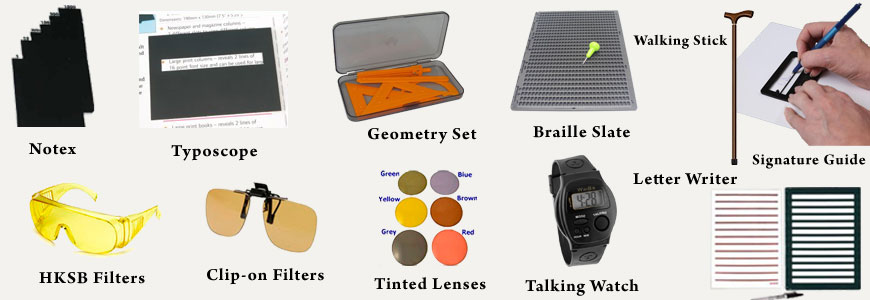
Devices for Distance : Telescopes
Monocular Telescope ( Hand held and Spectacle Mounted )
Binocular Telescope
SEE TV ( Spectacle Model Telescope )
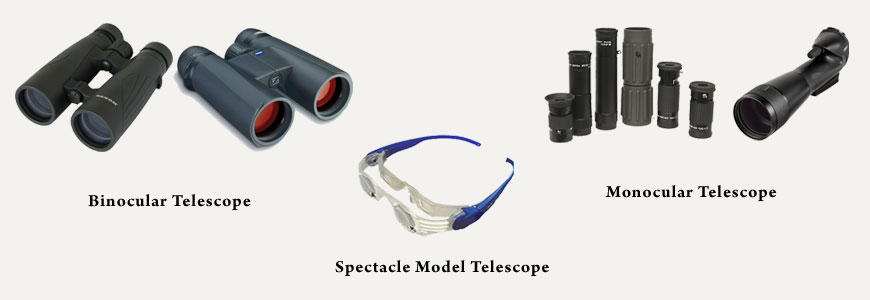
Devices for Near
Spectacle Magnifiers
Stand Magnifiers
Hand held Magnifiers
Dome Magnifiers
Fresnel Book Magnifiers
Pocket Magnifiers
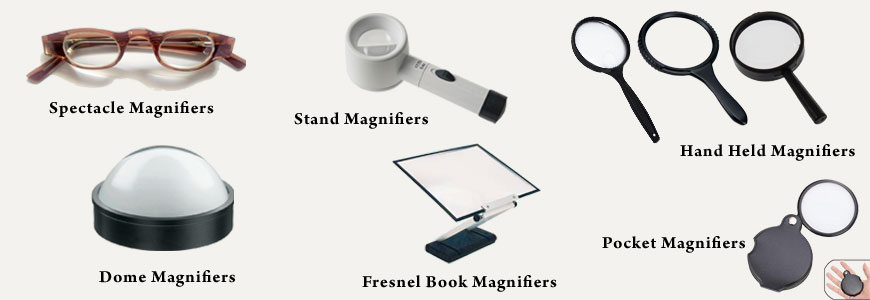
Available Assistive Devices
CCTV - Closed Circuit Tele Vision - Aladdin CCTV
This is the most primitive model of CCTV which will have the inbuilt camera and projects the image through the self displaying monitor. This provides magnification range of 20x to 50x. Four viewing modes are possible with variable contrast. The image can be manually focused at different levels of magnification.
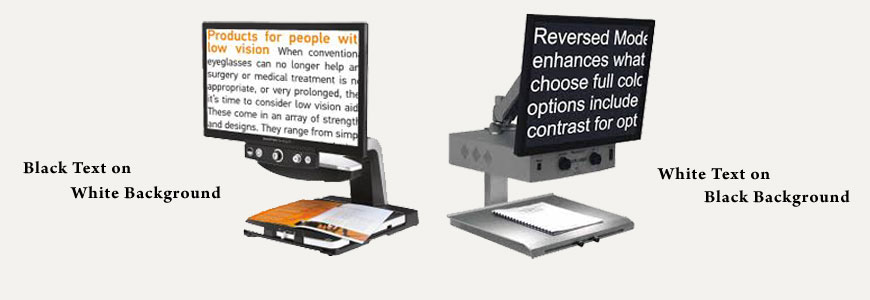
Eye - Q ( Pocket CCTV )
Portable model CCTV which has self display of 4.3 inch and provides a magnification of 4x, 7.5x, 8x and 15x. This has 3 variable contrast viewing modes. This device has an in-built writing stand for doing handwritten work. This can also be connected to a TV for viewing on an enlarged screen.
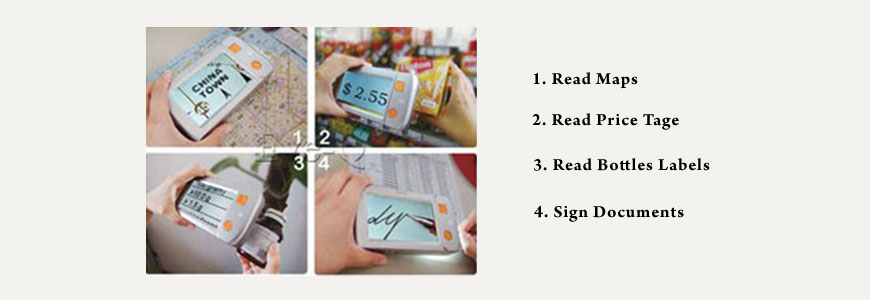
Bonita - Mouse Model CCTV
A low cost portable magnifier that can be connected to any standard television / PC monitor ( with the help of an adaptor ), which provides magnification of 20 to 70 times on a 21 inch monitor with 3 different contrast modes.
Quick Look Zoom
This portable magnifier has 4.3 inch LCD display, which provides magnification of 3x to 18x with 56 variable contrast modes. The unique design with flip camera on the side of the unit helps in better writing tasks.
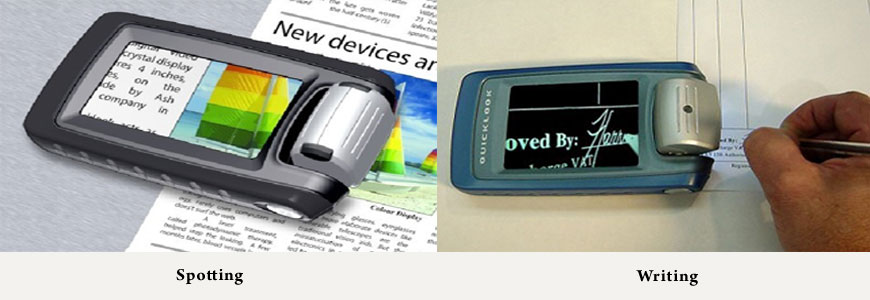
Onyx
A powerful video magnifier mounted on a swing arm provides magnification of up to 100 times on a 21 inch monitor in which 3 viewing modes are possible i.e Distance view for viewing black boards / powerpoint presentations, Near view for reading and Mirror view for self - grooming. This device provides 3 different contrast, variable brightness and typoscope effect for better reading tasks.

Reader Devices : Buddy Player
Buddy player is an assistive media player designed to address the educational and entertainment needs of a person with visual impairment. It is user - friendly and has features of DAISY forum, FM radio, Voice recorder, etc. All E - books ( Preferably in Daisy format ) can be downloaded to Buddy player through USB card; both human voice notes and digital voice notes will be recognized.
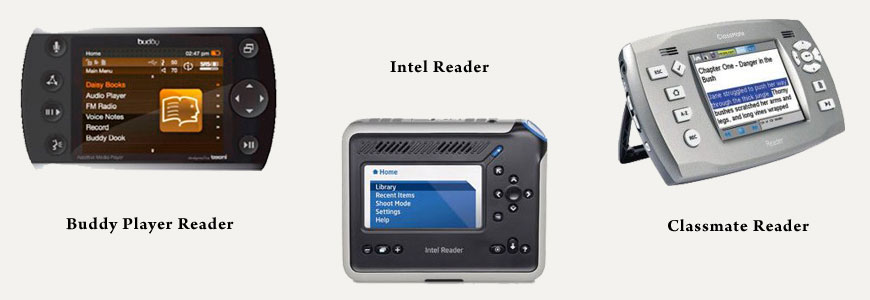
ClassMate Reader
The ClassMate Reader is a portable, battery - powered product intended to meet the needs of people who have visual reading difficulties. It combines synthetic speech and a small touchscreen to present material. It can be controlled either by physical buttons or by the touchscreen.
Accessible file formats include text, HTML and DAISY. Information can be stored on either an SD ( Secure Digital ) card or USB drive. The USB port can also be used to transfer material from a computer to the ClassMate Reader.
Intel Reader
The Intel Reader is a camera device with optical character recognition. Once a picture of text has been taken it is possible to have it read back by a male or female voice. The speed and pitch of voices can be adjusted. All menus are read aloud, actions have sounds linked to them and the text viewed on the small screen ( 4.3" ) can be enlarged or enhanced with color changes. It is possible to scroll through text and files that are saved on the device. There is a computer USB connection through which the data can be transferred. The Intel Reader will play MP3 / WAV files, DAISY books and text transferred from a computer.
Available Guidance - Contrast Enhancements
Environmental modification to enhance contrast within the patients own living area are suggested so that their environment is suited to their visual limitations.
